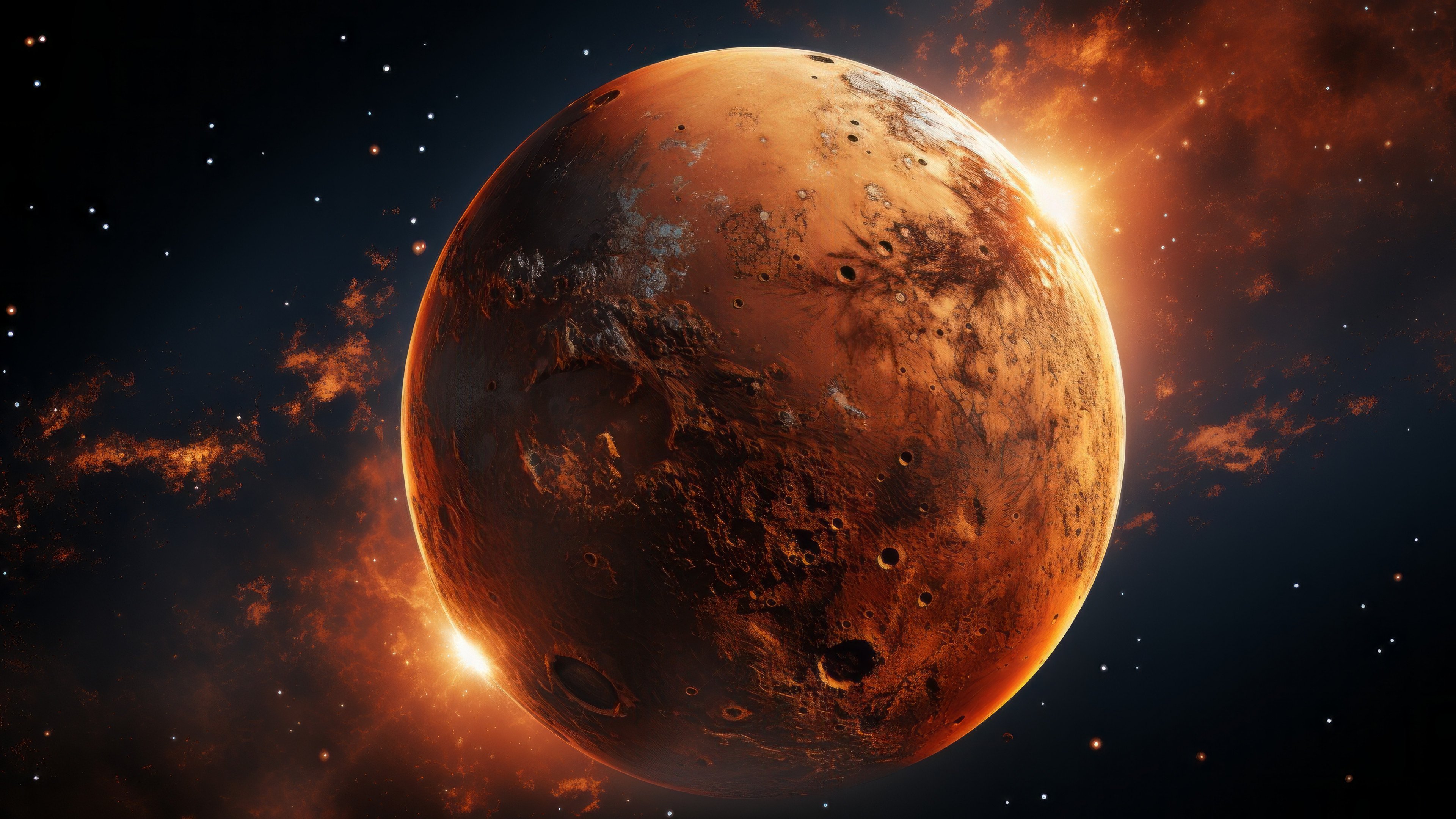Marte: The Ultimate Guide To Unveiling The Mysteries Of Mars
Ever wondered about the red planet that's been making headlines? Marte, or Mars, has captured the imagination of scientists, explorers, and dreamers alike. From ancient myths to modern-day space missions, this celestial body holds secrets that could redefine our understanding of the universe. But what exactly makes Marte so fascinating? Let's dive into the details and uncover the wonders of this distant world.
Marte isn't just another planet; it's a symbol of human curiosity and ambition. For decades, scientists have been studying this mysterious neighbor, uncovering evidence of ancient water flows, potential signs of life, and even plans for future colonization. As we continue to explore Marte, we're inching closer to answering some of the biggest questions about our place in the cosmos.
So, whether you're a space enthusiast or simply curious about the possibilities beyond Earth, this guide will take you on a journey through the mysteries and marvels of Marte. From its geological features to its potential for sustaining life, we'll explore everything you need to know about this enigmatic planet.
Read also:Emoji Blitz Calendar Your Ultimate Guide To Unlocking Fun And Creativity
Let's jump into the details!
Table of Contents
- Introduction to Marte
- Geography of Marte
- Climate on Marte
- History of Marte Exploration
- Potential for Life on Marte
- Missions to Marte
- Colonization Plans for Marte
- Technology Used in Marte Exploration
- Challenges of Marte Exploration
- The Future of Marte Exploration
Introduction to Marte
Marte, or Mars, is the fourth planet from the Sun and the second-smallest planet in our solar system. It's named after the Roman god of war due to its reddish appearance, which is caused by iron oxide, or rust, on its surface. This planet has long fascinated humans, inspiring countless stories, myths, and scientific inquiries.
One of the most intriguing aspects of Marte is its similarity to Earth. Both planets have polar ice caps, seasons, and evidence of water in their past. These similarities make Marte a prime candidate for studying the potential for extraterrestrial life and even future human colonization.
Why Study Marte?
Studying Marte is crucial for several reasons. First, it helps us understand the origins and evolution of our solar system. Second, it provides valuable insights into the potential for life beyond Earth. Lastly, exploring Marte could pave the way for future space exploration and colonization efforts.
Geography of Marte
Marte boasts some of the most spectacular geological features in the solar system. From towering volcanoes to deep canyons, this planet is a geological wonderland.
Key Features of Marte's Surface
- Olympus Mons: The largest volcano in the solar system, standing at about 13.6 miles high.
- Valles Marineris: A massive canyon system that stretches over 2,500 miles long and reaches depths of up to 4 miles.
- Polar Ice Caps: Composed of water ice and dry ice (frozen carbon dioxide), these caps expand and contract with the changing seasons.
These features not only make Marte visually stunning but also provide valuable information about its geological history and processes.
Read also:Mr Beast Memes The Ultimate Guide To The Viral Sensation Thatrsquos Taking Over The Internet
Climate on Marte
The climate on Marte is harsh and unforgiving. With an average temperature of about -80 degrees Fahrenheit (-62 degrees Celsius), it's one of the coldest planets in the solar system. The atmosphere is thin, composed mostly of carbon dioxide, with traces of nitrogen and argon.
Seasons on Marte
Marte experiences seasons much like Earth, but they last about twice as long due to its longer orbit around the Sun. During the summer, the polar ice caps shrink, releasing carbon dioxide into the atmosphere, while in winter, they expand, trapping the gas.
Understanding the climate of Marte is essential for planning future missions and potential colonization efforts.
History of Marte Exploration
The exploration of Marte dates back to the early 20th century, with the first successful flyby occurring in 1965 by NASA's Mariner 4 spacecraft. Since then, numerous missions have been launched to study this enigmatic planet.
Notable Marte Missions
- Viking 1 and 2: Launched in the 1970s, these missions provided the first detailed images of Marte's surface.
- Mars Rover Program: Rovers like Spirit, Opportunity, and Curiosity have explored Marte's surface, collecting valuable data about its geology and potential for life.
- Perseverance Rover: Launched in 2020, this rover is equipped with advanced technology to search for signs of ancient microbial life and collect samples for future return to Earth.
Each mission has contributed to our growing understanding of Marte and its potential for supporting life.
Potential for Life on Marte
One of the most exciting aspects of Marte exploration is the search for life. While no definitive evidence has been found yet, several factors suggest that Marte could have supported life in the past.
Evidence of Water on Marte
Scientists have discovered evidence of ancient river valleys, lake beds, and even possible underground reservoirs of water on Marte. Water is a crucial ingredient for life as we know it, making these discoveries particularly intriguing.
Further exploration and analysis are needed to determine whether life ever existed on Marte and, if so, what form it might have taken.
Missions to Marte
With the growing interest in Marte, numerous missions are planned for the coming years. These missions aim to expand our knowledge of the planet and pave the way for future human exploration.
Upcoming Marte Missions
- ESA's ExoMars Rover: Set to launch in the mid-2020s, this rover will search for signs of life and study the planet's geology.
- NASA's Artemis Program: While primarily focused on returning humans to the Moon, this program will also lay the groundwork for future Marte missions.
- SpaceX's Starship: Designed for interplanetary travel, this spacecraft could one day transport humans to Marte.
These missions represent a new era of space exploration, with Marte at the forefront of scientific inquiry.
Colonization Plans for Marte
While still in the early stages, plans for colonizing Marte are gaining momentum. Companies like SpaceX and organizations like NASA are actively working on technologies and strategies to make human settlement on Marte a reality.
Challenges of Colonizing Marte
Colonizing Marte presents numerous challenges, including:
- Harsh environmental conditions
- Limited resources
- Long travel times
- Health risks associated with space travel
Despite these challenges, the potential benefits of establishing a human presence on Marte are immense, including advancing scientific knowledge, promoting technological innovation, and ensuring the long-term survival of the human species.
Technology Used in Marte Exploration
Advances in technology have revolutionized our ability to explore Marte. From powerful telescopes to sophisticated rovers, these tools are essential for gathering data and conducting experiments on the planet.
Key Technologies in Marte Exploration
- Rovers: Equipped with cameras, spectrometers, and other instruments, rovers are the workhorses of Marte exploration.
- Orbiters: These spacecraft provide valuable data about Marte's atmosphere, surface, and subsurface features.
- Sample Return Missions: Designed to collect and return samples from Marte to Earth for detailed analysis.
As technology continues to evolve, so too will our ability to explore and understand Marte.
Challenges of Marte Exploration
Exploring Marte is no easy feat. From technical challenges to budget constraints, numerous obstacles must be overcome to make these missions successful.
Overcoming the Challenges
Collaboration between international space agencies, private companies, and academic institutions is key to overcoming the challenges of Marte exploration. By pooling resources, sharing knowledge, and working together, we can achieve the goals of understanding Marte and potentially colonizing it.
The Future of Marte Exploration
The future of Marte exploration is bright. With ongoing missions, planned launches, and advances in technology, we're closer than ever to unlocking the mysteries of this fascinating planet.
What's Next for Marte Exploration?
In the coming years, we can expect to see more detailed studies of Marte's geology, atmosphere, and potential for life. Human missions to Marte could become a reality within the next few decades, opening up new possibilities for scientific discovery and human expansion.
As we continue to explore Marte, we'll undoubtedly uncover new insights and surprises that will shape our understanding of the universe and our place within it.
Conclusion
Marte is a planet full of mysteries and possibilities. From its stunning geological features to its potential for supporting life, this distant world continues to captivate and inspire us. By studying Marte, we gain valuable insights into the origins and evolution of our solar system, as well as the potential for life beyond Earth.
So, whether you're a space enthusiast or simply curious about the possibilities beyond our home planet, Marte offers a wealth of knowledge and inspiration. Keep exploring, keep questioning, and keep dreaming about the wonders that lie beyond our world.
And remember, the journey to Marte is just beginning. Who knows what discoveries await us as we continue to explore this enigmatic planet? Share your thoughts in the comments below and don't forget to check out our other articles for more fascinating insights into the universe!


